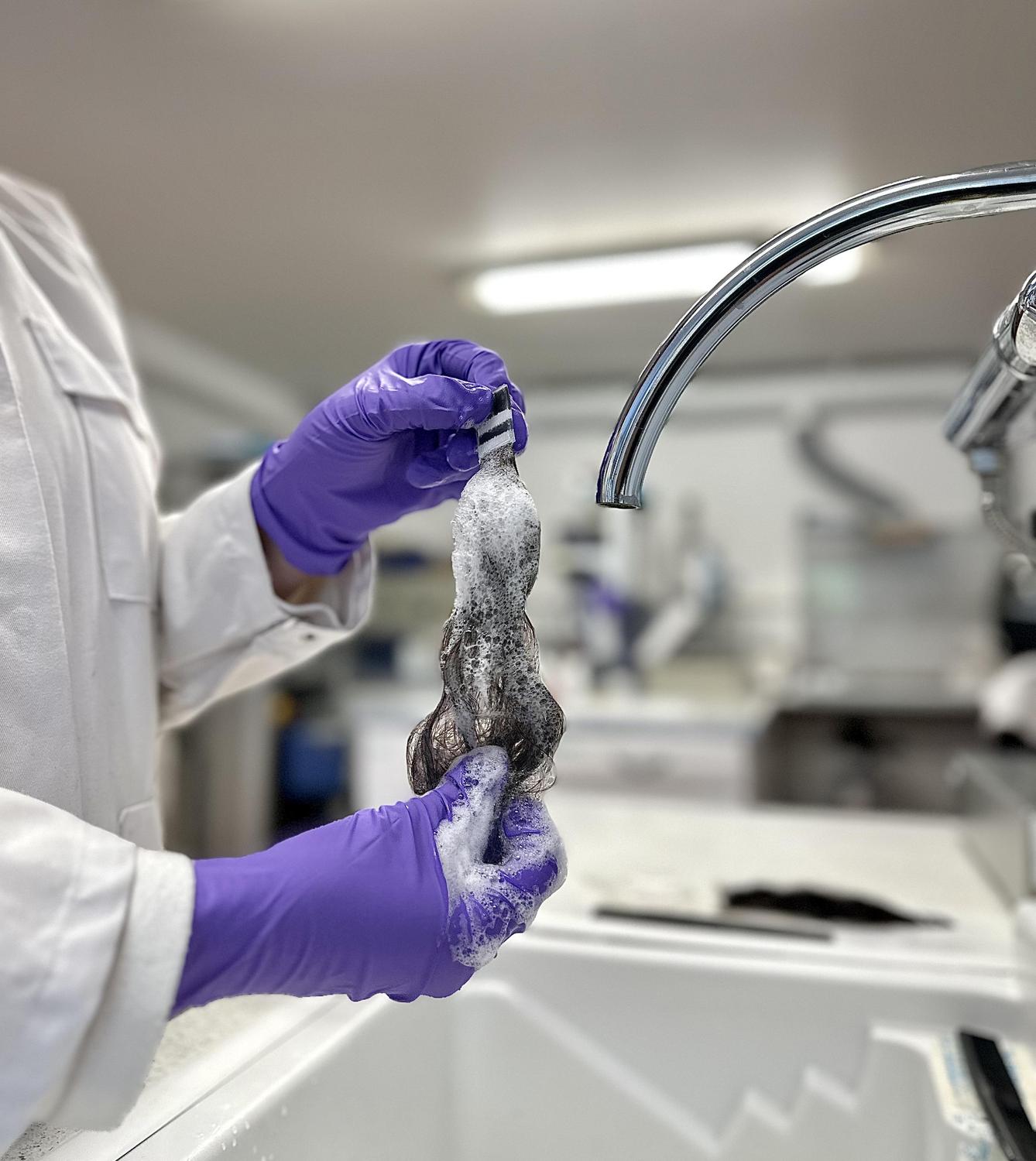Hair assessment

For over 15 years, SP Equation has been developing in vitro hair evaluation methods to support brands in validating the performance of their hair care products. Thanks to our technical expertise and state-of-the-art equipment, we objectively measure the effects of products on different hair types.
Our evaluations cover several areas:
- Structure: breakage analysis, mechanical strength, fiber repair, UV protection, etc.
- Shine and Color: color retention, gray coverage, shine and luster.
- Shape and Styling: volumizing effect, curl retention, smoothing effect, frizz reduction, ease of styling.
Each protocol is tailored to the client's objectives to ensure usable, reproducible data that meets market expectations. Our instrumental measurements allow us to quantify performance and justify clear claims for your product launches.
Methods
BENDING AND ABRASION RESISTANCE
The method assesses a hair's resistance to repeated bending and abrasion by determining its "life time." This evaluates damage to both the surface and the core of the fiber.
CURL RETENTION
The method assesses curl relaxation over time at controlled humidity.
COMBING BREAKAGE
The objective of this method is to assess the effectiveness of hair products in reducing hair breakage during combing. This method is based on quantifying the amount of hair breakage resulting from repeated combing.
SHINE
The principle involves alternately illuminating a tress of hair attached to a cylindrical support with polarized light and taking two photographs of this support: one with cross-polarized light, the other in a parallel direction. From this data, it is possible to determine an index called BNT Luster.
BNT Luster characterizes shine: the higher it is, the more shine the tested product provides.
UV PROTECTION OF THE FIBER
The mechanical properties of hair are altered by ultraviolet radiation. They are analysed by extensometry after irradiation for a predetermined period.
EXTENSOMETRY
The Dia-Stron extensometer measures the force generated during the traction of a hair until it breaks. The effect of a reactive hair product (coloring, bleaching, perming, straightening) can be characterized by the tensile-breakage measurement.
COLOR PROTECTION FROM WASHING / HAIR COLOR LASTING DURABILITY
Color protection from washing and the durability of hair color products after several shampoo are assessed by determining the color difference (DE*76) between the initially colored strands and those that have undergone a certain number of shampoos.
UV COLOR PROTECTION / HAIR COLOR LASTING DURABILITY
Color protection from ultraviolet (UV) radiation and the durability of hair color products during UV radiation are assessed by color measurements by determining the color difference between colored strands not exposed to UV rays and those that have undergone UV rays.
THERMOPROTECTION
The principle is based on the application of a heat-protective product followed by a thermic treatment with a flat iron. Evaluating the mechanical properties of thermally damaged hair, both with and without products, allows for the measurement of the thermoprotection effect.
VOLUME AND FRIZZ
The method involves taking images of a strand of hair spinning against a back light panel. These images are converted to grayscale and analyzed using thresholding. This analysis differentiates between the body and frizz of the strand.
COMBABILITY
The combability measurement method using the MTT175 device aims to quantify the combing resistance of a hair strand. This assessment helps determine the effectiveness of hair products designed for detangling hair.
FRICTION / SOFTNESS
The principle involves passing a probe measuring a coefficient of friction (CoF) over each side of a hair strand. The strand is attached to the moving cell at the root and tip. The moving cell makes horizontal movements so that the probe touches the tress. The higher the CoF, the less soft the wick will be.
We are conducting studies with our partners:
- Hydration
- Structural analysis of keratin
- Surface roughness
- Cyclic fatigue





